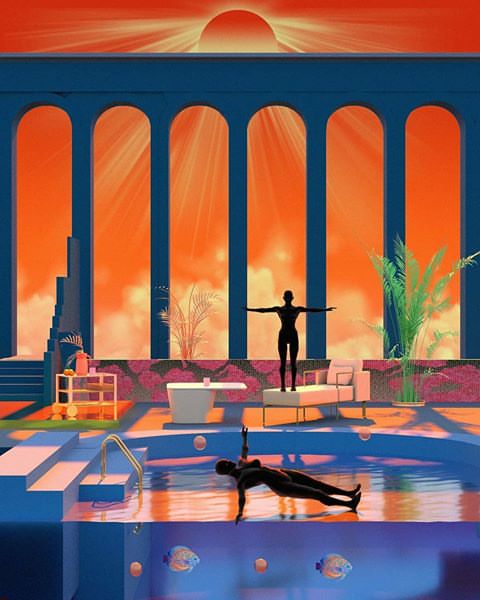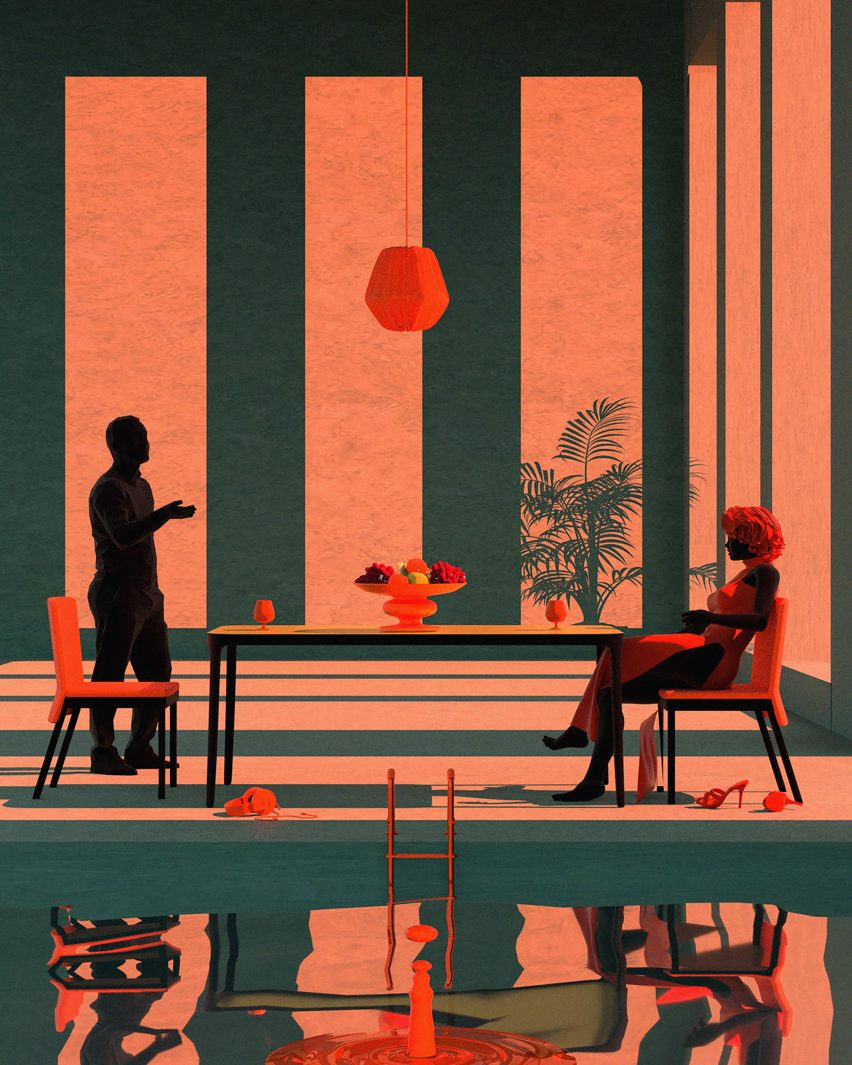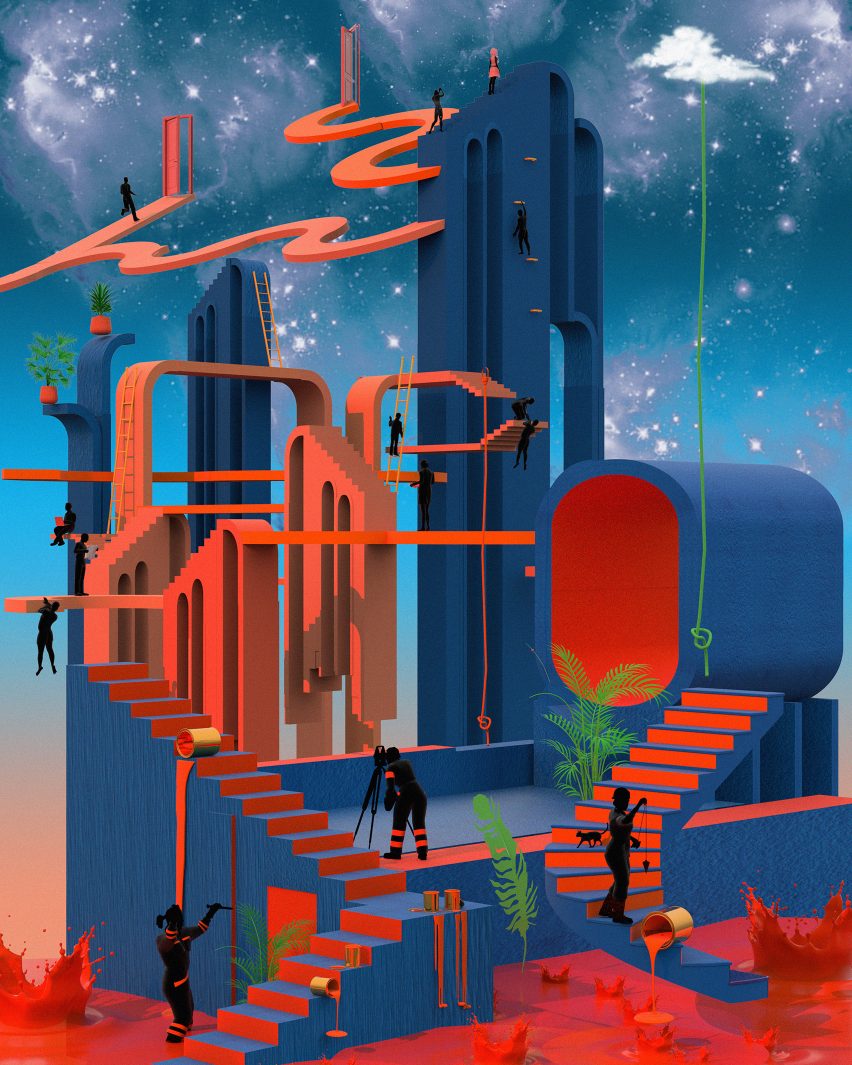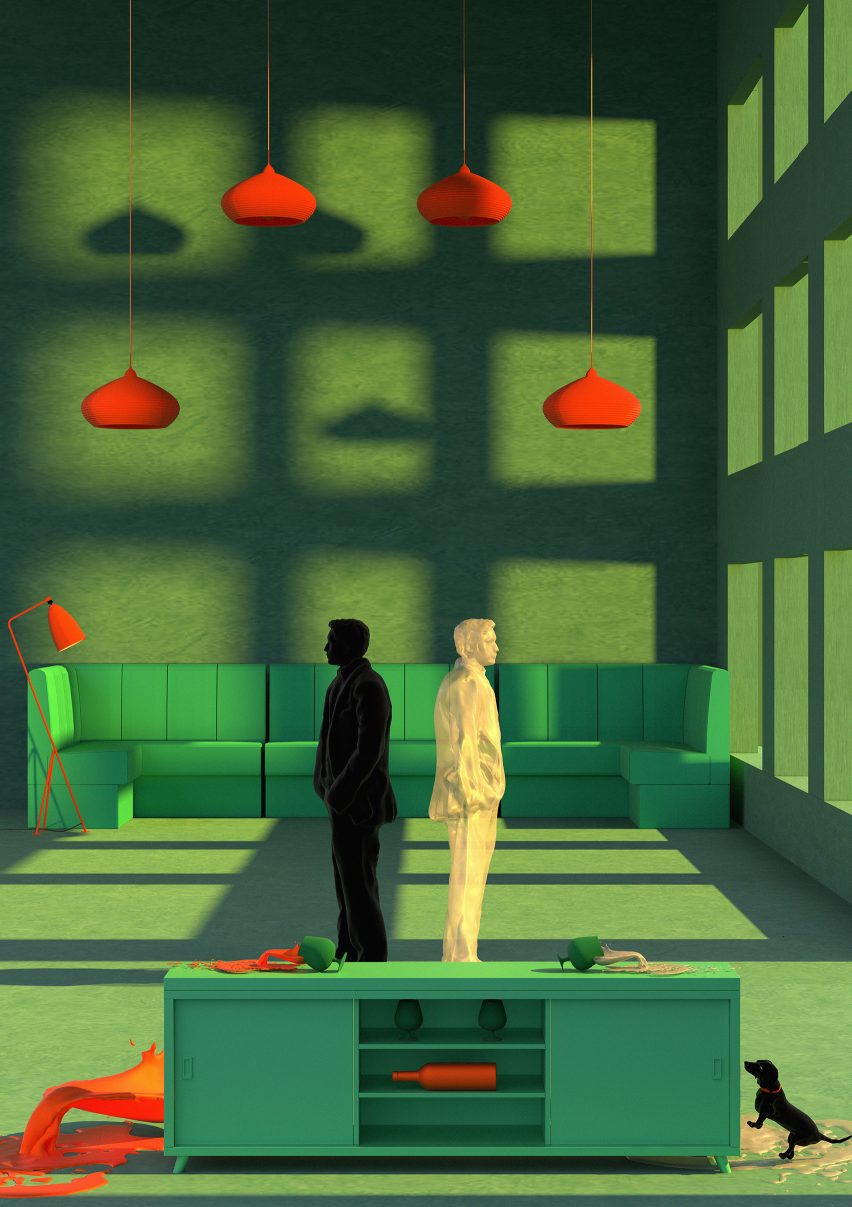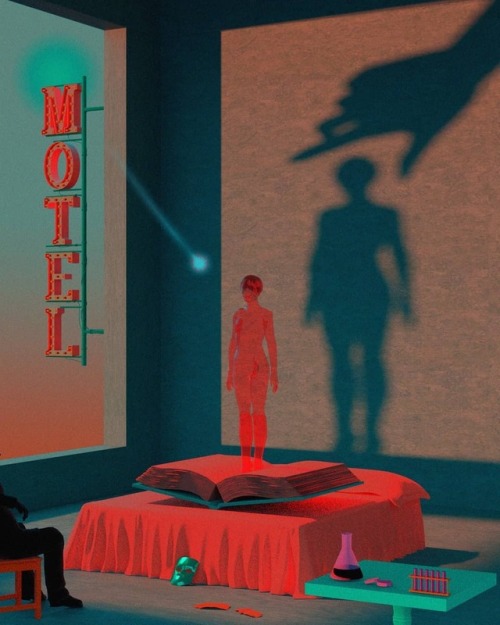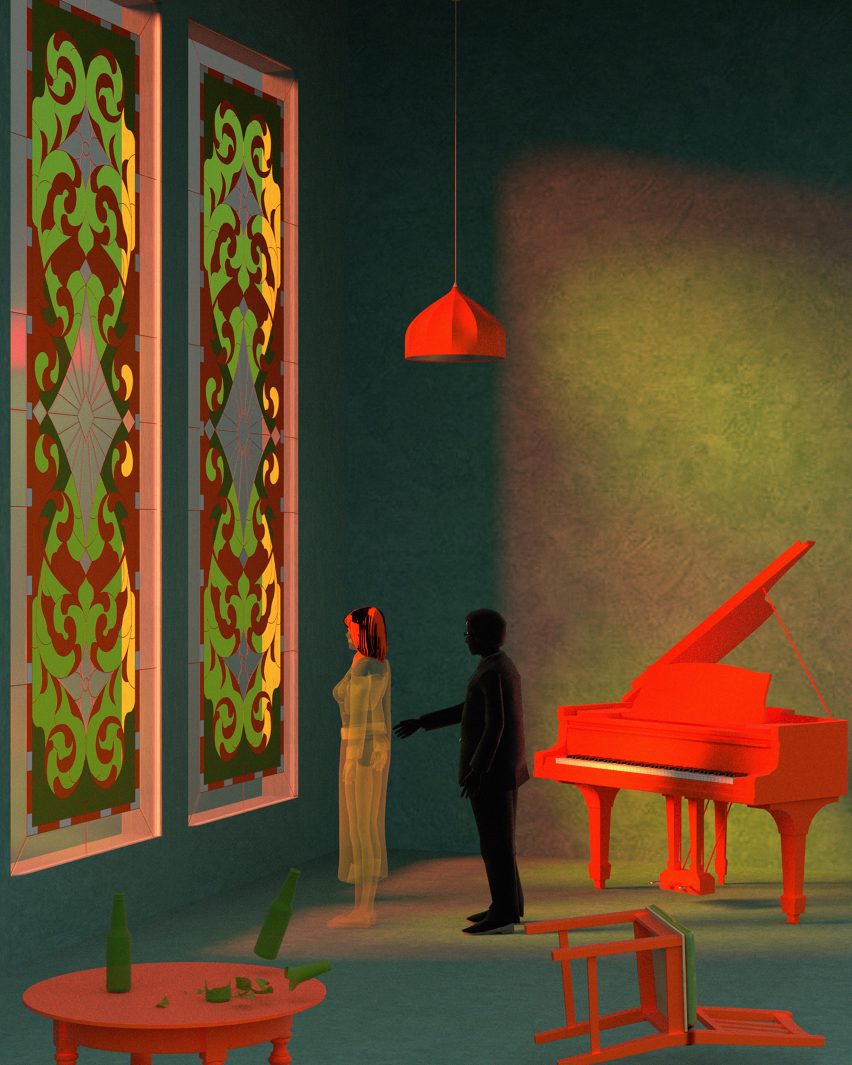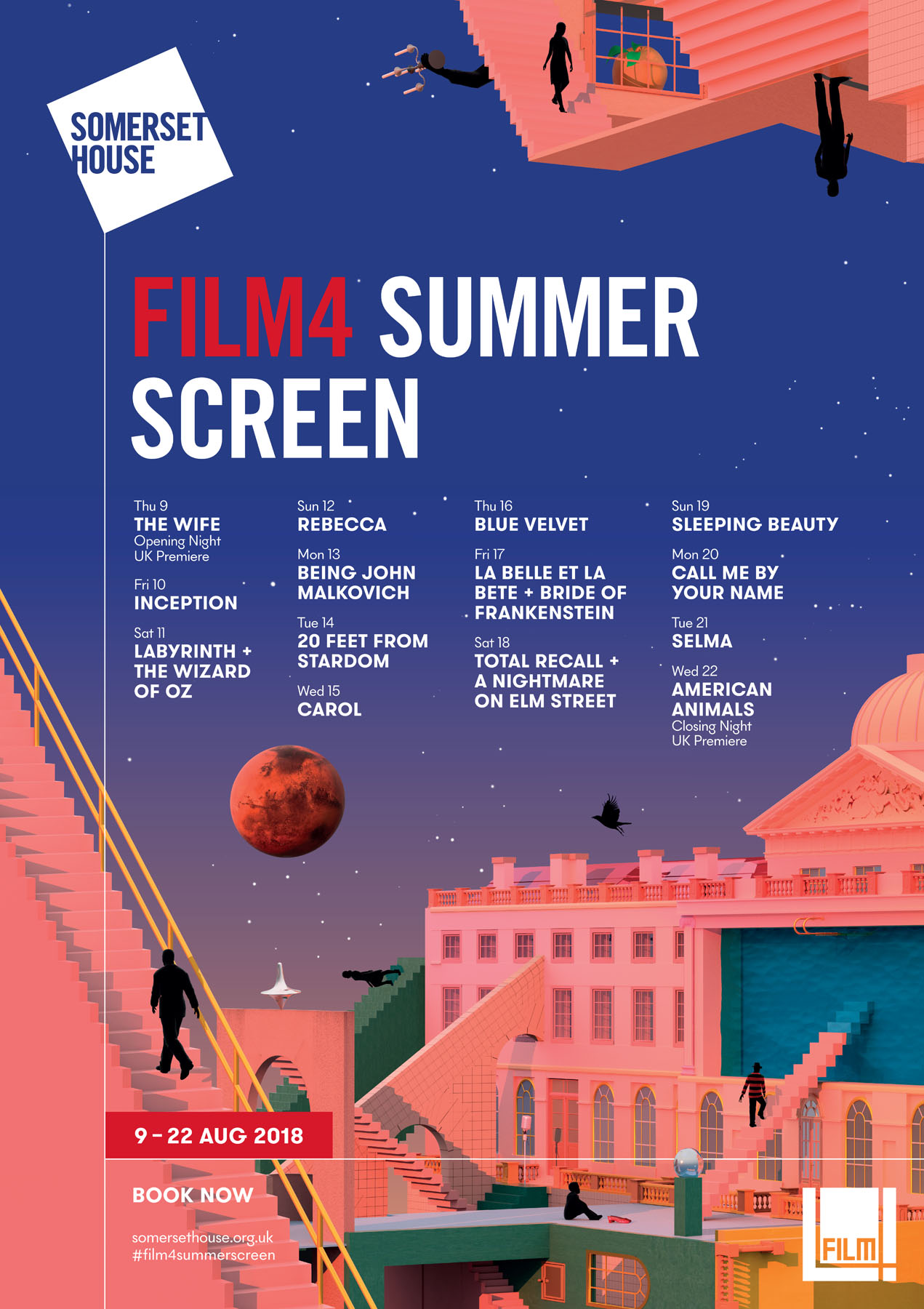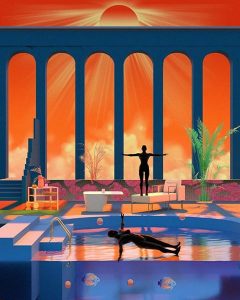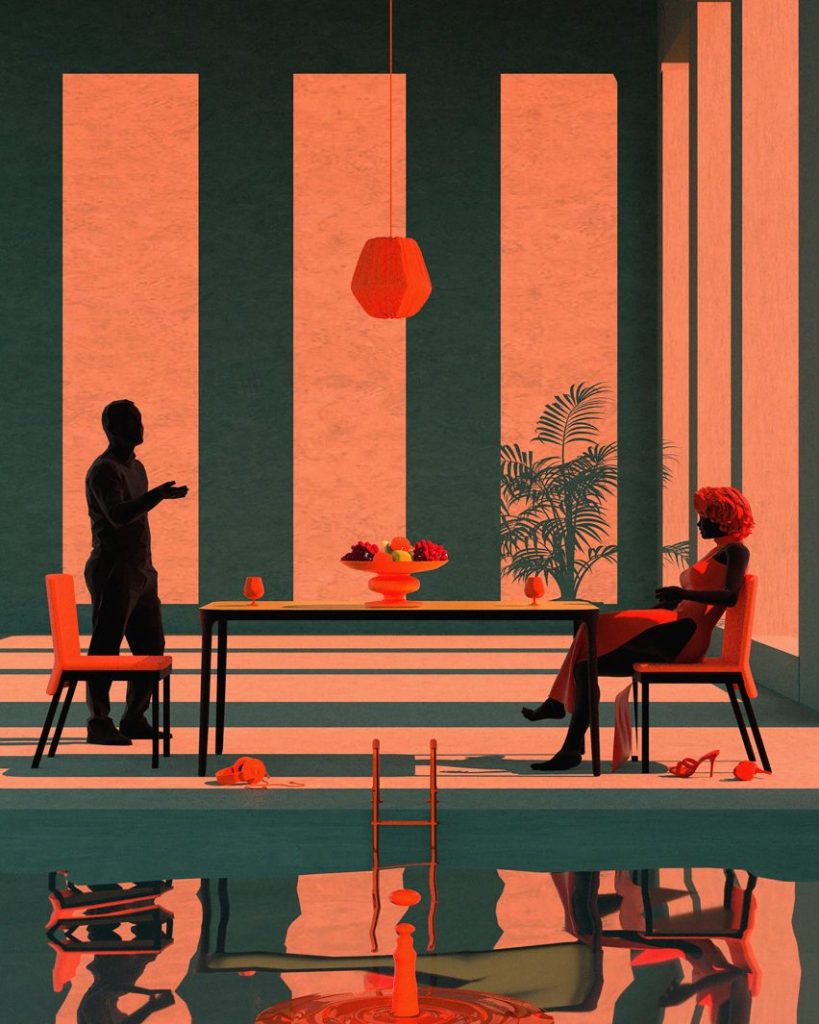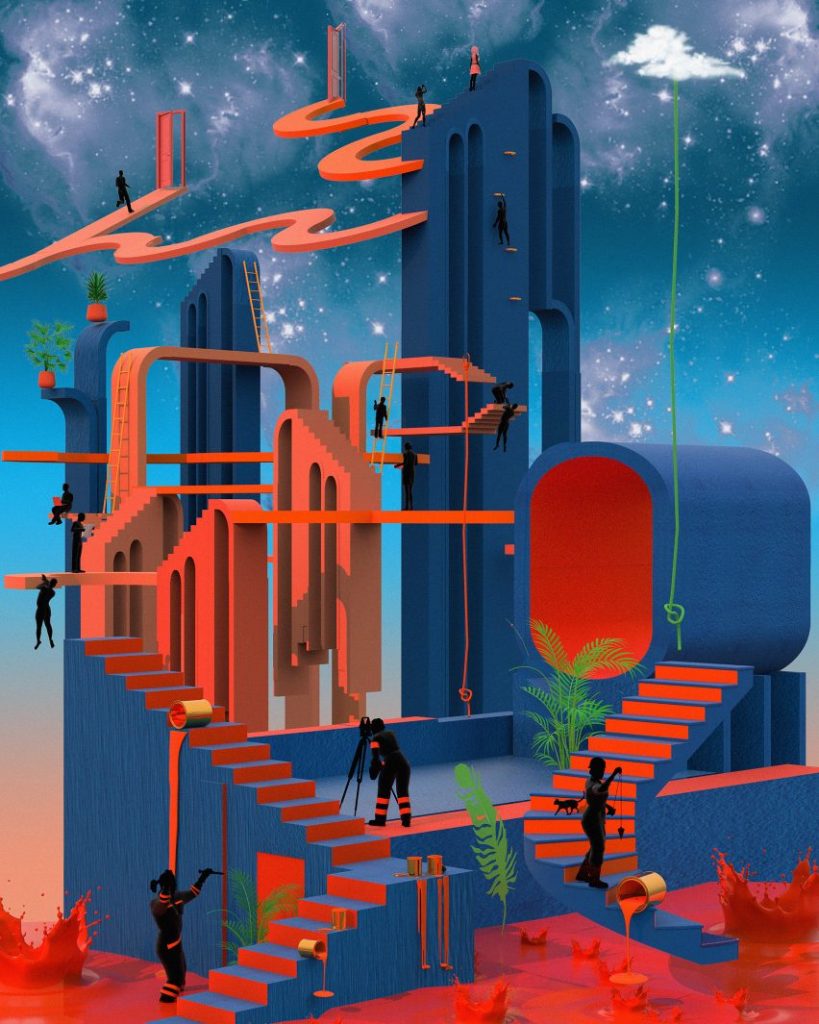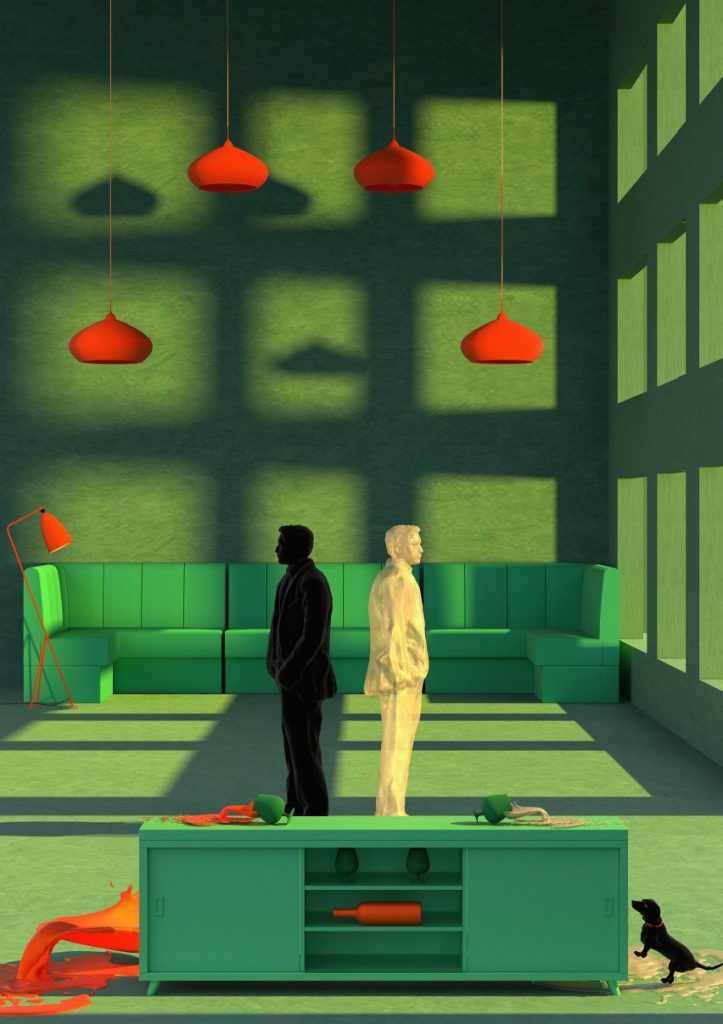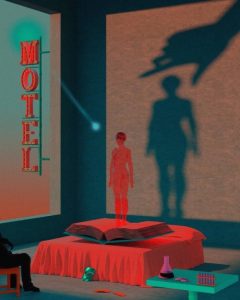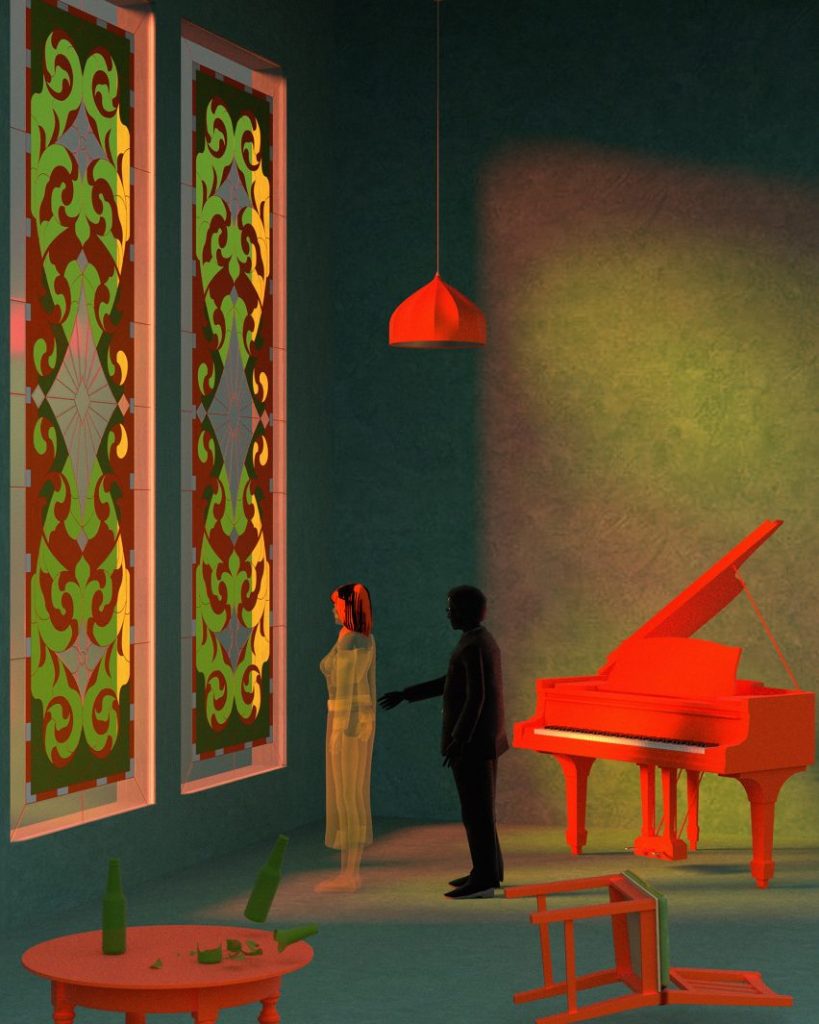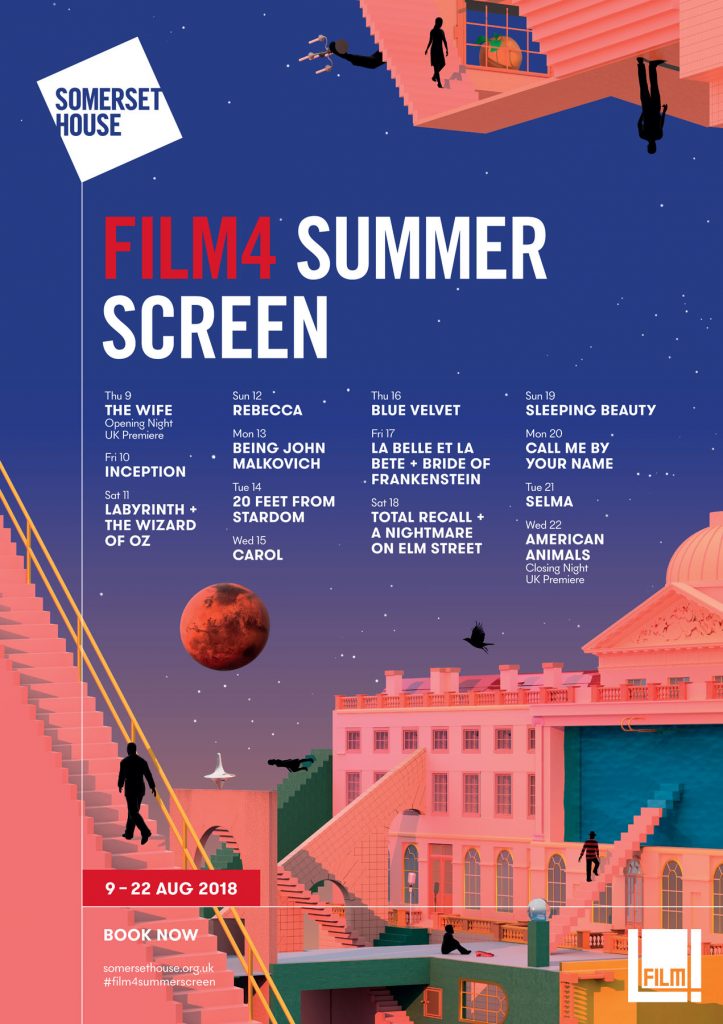Human interactions and emotions represented through the deconstruction of space and colors, the inconsistency of outlines, and the indecipherability of bodies. The Kurdish artist Tishk Barzanji illustrations make use of surrealism and modernism to depict human figures within unreal and cinematic scenarios and interiors, who at the same time seem trapped in uneasiness and impasse.
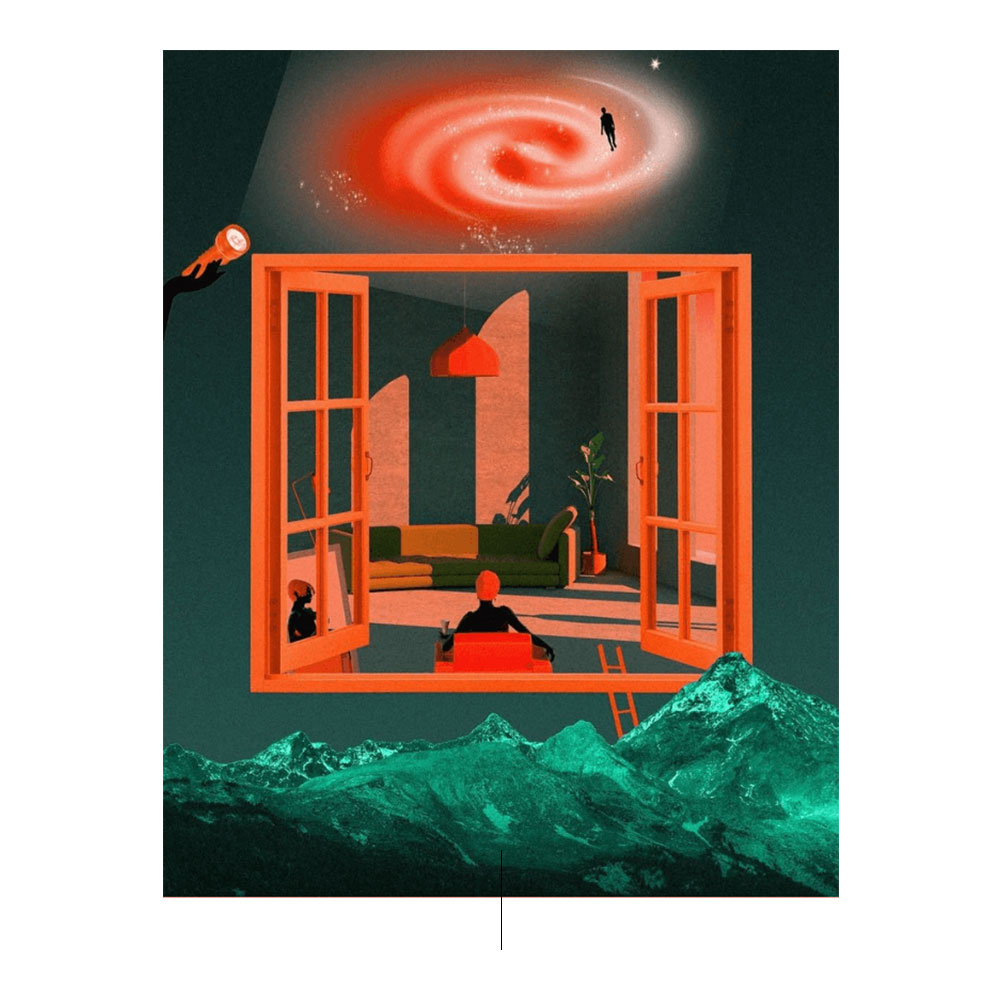
In his works the harmony of shapes and colors hides the discomfort and loneliness of the human being. The warm and vivid hues, the symmetrical structures, are united with characters portayed among the shadows, caught in impassive, almost enigmatic, attitudes. Silhouettes who watch their vicissitudes from the outside, waiting for something that they never seem to obtain. In 1997 the artist, who emigrated from Kurdistan, moved to London, where the many cultural incentives sparked his passion for art and architecture. After a long period of illness during his last year as physics student at Loughborough University that compelled him to isolation, he decided to follow his interest in creativity. The choice of using art as a healing process led him to observe the world that was around him, where he didn’t feel integrated. And by focusing on dichotomies space/individuals, lights/shadows, not only is he is able to unveil the uneasiness of a state of mind, but above all he metabolizes it. In fact, Barzanji, uses an aesthetics characterized by pastel hues, dreamlike urban landscapes, surreal and bizzarre atmospheres in order to touch on human themes such as loneliness, anxiety and the comprehension of existence itself. In Self (2019) two equivalent figures seem to be carrying out an introspective journey and questioning themselves on the concepts of anguish and isolation. In the setting purple, orange and pink hues prevails. The sun rays filter through the architectural vaults, casting shadows over the stairways, the pool, and common objects. Therefore self-discovery derives exclusively from the replacement of the ordinary/rational with the imaginary/irrational.
In The Last Banquet (2018), one of his most known pieces, a male silhouette tries to interact with a woman with a woman hair as shiny and red as her dress. A rectangular table in the middle of the setting. Long green-blue shadows descend the pink wall and cross the floor, while the sunset lightens up the room. A swimming pool reflects the whole scene blurring up the outlines. Time seems not to exist. Everything is so hypnotic, incomprehensible, tragic. Know your place (2018), on the other hand, conveys the visual power of the artist. Here the image is dominated by bright deep blue and pink staircases that recall the geometric explorations of Maurits Escher, of the Dutch artist and engraver. The structure, which seems to come out of a pool full to the brim with red paint, alternates with houseplants and lonely black figures. On the contrary, at the top one can see doors wide open on a starry sky. Everything seems to be chaotically quiet. In this case surrealism allows the artist to connect the creative imagination with his thoughts on concepts such as existence, utopia, escape. Another important feature is the use of colour. In Milestone (2018), for example, contrasting colours and dark shadows bring forth an unreal and mystical atmosphere. Details are what the artist seems to be truly interested. His compositions of stairs, walls and impossible architectures show how much space influences the way in which the characters interact, and the way it puts them near closer and moves them away. This is how a dimension opens up in order to examine their attitudes. In Potion (2019), a black figure balances on a huge open book, casting its own shadow on the wall. Above it, there is a shadow of a hand that maybe belongs to the person who can be distinguished sitting in front of the bed. Blue and red are the predominant tones. The illustration echoes Magritte’s atmospheres and uses symbolic objects such as masks and phials just to tell us of transformation, dissimulation, fear and salvation. Isolation is a means of inner knowledge. In Lost and Found (2018) two individuals in an imaginary room try to find each other again, recognize themselves again among upside down chairs and broken bottles. The forms of the compositions seem to create a world without borders among space and colours, everything coexists freely. Just as in Cycles in the Silence (2018), where in a fictional backdrop two different scenarios (mountain and domestic) culminate in the conscience/universe spiral. The artist draws by hand, using a base with watercolors or acrylics, on which he later adds patterns and digital colours. In this way he achieves a mix between painting and three-dimensional art. Along with his childhood memories, the sources of inspiration for his works are the spanish architect Ricardo Bofill for the spatial perception, Mondrian, and the De Stijl movement (neoplasticism), Magritte’s surrealism and the chromatic tones of the sculptor Ken Price. Brutalist architecture played an important part in his work, especially in the initial phase, during which he explored artistic forms such as photography. The artist also made the poster for the Film4 Summer Screen season at Somerset House, as well as covers for books, albums and videos. Barzanji’s work takes the viewer to fairy tale atmospheres and unusual mental dimensions. His message goes straight to the heart, because he speaks to us of deep sensations, wonders about human emotions that are sometimes frightening, such as anxiety, isolation, loss and escape. Emotions that encourage reflections and reactions, and lead to self discovery and to the acceptance of one’s frailties.
